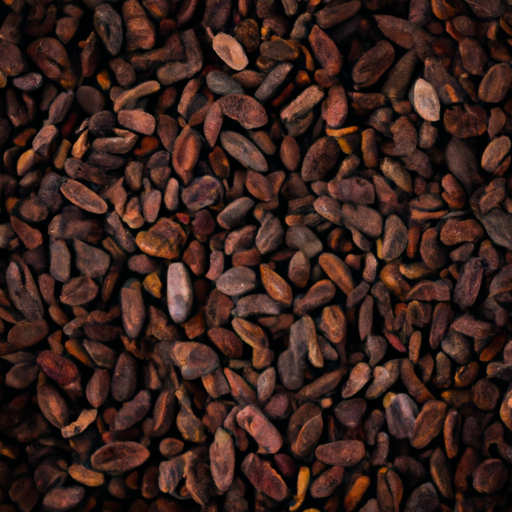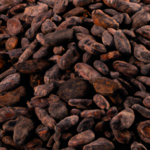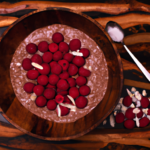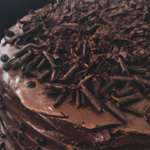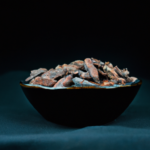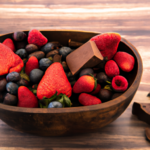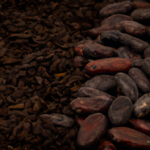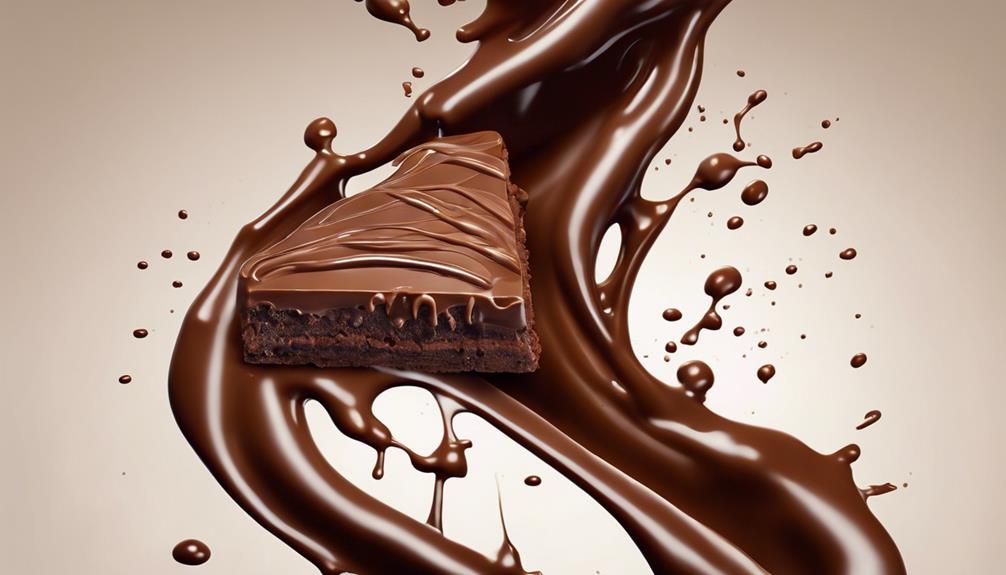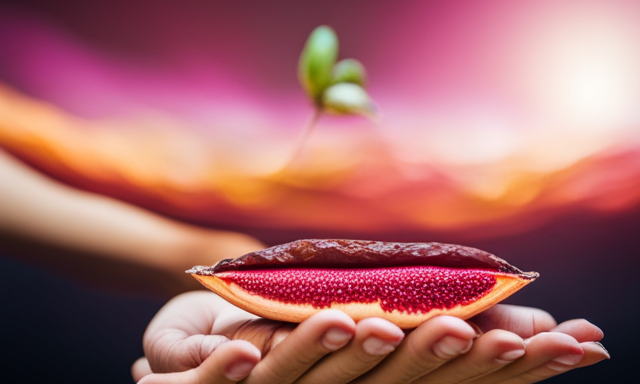Hey! Have you ever been curious about the tiny treats known as raw cacao nibs? Let me show you the way on this chocolate adventure.
Raw cacao nibs are essentially small pieces of crushed cacao beans, the seeds that ultimately give us the rich and delicious treat we know as chocolate. But these nibs are a whole different ballgame.
In this article, we’ll dive into the origin and history of cacao beans, explore what exactly raw cacao nibs are, and uncover their impressive nutritional and health benefits. We’ll also discuss how you can easily incorporate them into your diet and provide some tips on buying and storing them. Of course, we’ll touch on potential side effects and precautions too, because it’s always good to be well-informed.
So, if you’re ready to embark on this cocoa-filled adventure, let’s get started and unravel the mysteries of raw cacao nibs!
Key Takeaways
- Raw cacao nibs are small, crunchy pieces of roasted and cracked cacao beans.
- They have a unique chocolatey flavor and texture.
- Raw cacao nibs are packed with antioxidants, fiber, magnesium, and iron.
- They are a healthier alternative for chocolate cravings and support healthy digestion.
Origin and History of Cacao Beans
The origin and history of cacao beans are deeply intertwined with the cultivation and consumption practices of ancient civilizations in Mesoamerica. Cacao beans were not only a staple food source but also held immense cultural significance. They were used in religious rituals, as a form of currency, and even as a beverage consumed by royalty and warriors.
The Mayans and Aztecs recognized the value and importance of cacao beans, referring to it as the ‘food of the gods.’ These beans were highly prized and considered a luxury item.
Now, let’s dive into the world of raw cacao nibs and explore how they are derived from these ancient beans.
What are Raw Cacao Nibs?
Raw cacao nibs are small pieces of crushed cacao beans that have been dried and fermented. They are the purest form of chocolate, before any additional processing or additives. Unlike cocoa powder, which is made by grinding roasted cacao beans, cacao nibs retain their natural nutrients and antioxidants. They have a rich, slightly bitter taste and a crunchy texture. Raw cacao nibs can be used in various recipes, such as smoothies, desserts, and energy bars, adding a delightful chocolate flavor and a satisfying crunch. Their versatility makes them a popular choice for those seeking a healthier alternative to processed chocolate.
Nutritional Benefits of Raw Cacao Nibs
When you incorporate these delectable little morsels into your diet, you’ll discover a wealth of nutritional benefits that can enhance your overall well-being. Raw cacao nibs have achieved superfood status due to their rich nutrient profile. Here are some key reasons why they are considered a nutritional powerhouse:
-
High in antioxidants: Raw cacao nibs contain a high concentration of antioxidants, which help protect the body against damage from free radicals.
-
Rich in minerals: These nibs are packed with essential minerals like magnesium, iron, and zinc, which are important for various bodily functions.
-
Good source of fiber: Raw cacao nibs are a great way to increase your fiber intake, promoting healthy digestion and aiding in weight management.
-
Versatile culinary uses: You can add raw cacao nibs to smoothies, desserts, or sprinkle them on top of yogurt or oatmeal for an added crunch and chocolatey flavor.
With their impressive nutritional profile and culinary versatility, raw cacao nibs offer numerous health benefits. Next, we will explore the specific ways in which these nibs can improve your well-being.
Health Benefits of Raw Cacao Nibs
Boost your well-being with the health benefits of incorporating these nutrient-rich morsels into your diet. Raw cacao nibs not only satisfy your chocolate cravings but also provide a range of health benefits. These little powerhouses are packed with antioxidants, minerals like magnesium and iron, and fiber, making them a nutritious addition to any meal or snack.
Let’s take a closer look at the culinary uses of raw cacao nibs. They can be used in baking, smoothies, granola, and even sprinkled on top of yogurt or oatmeal. Unlike cocoa powder, which is processed and often mixed with sugar, raw cacao nibs retain their natural goodness, preserving their rich flavor and nutrients.
To better understand the difference, let’s compare raw cacao nibs with cocoa powder. While both come from the same source, cocoa powder undergoes additional processing, which reduces its nutritional value. Raw cacao nibs contain higher amounts of antioxidants and fiber, making them a healthier choice.
Now that we know the health benefits and culinary uses of raw cacao nibs, let’s explore how to incorporate them into your diet seamlessly.
How to Incorporate Raw Cacao Nibs into Your Diet
One delicious way to enjoy the health benefits of these nutrient-rich morsels is by incorporating them into your favorite recipes. Here are some ideas on how to do just that:
- Add a handful of raw cacao nibs to your smoothies for an extra boost of antioxidants and fiber.
- Sprinkle cacao nibs on top of your morning oatmeal or yogurt for a crunchy and chocolatey twist.
- Use cacao nibs as a topping for desserts like ice cream or pudding to add a rich and decadent flavor.
- Incorporate cacao nibs into baked goods such as cookies or brownies for a delightful texture and taste.
By incorporating raw cacao nibs into your diet, you can enjoy their numerous health benefits while indulging in delicious recipes.
Now, let’s move on to the next section about buying and storing raw cacao nibs.
Buying and Storing Raw Cacao Nibs
If you’re looking to incorporate the health benefits of these nutrient-rich morsels into your diet, it’s important to know where to buy and how to store them. When buying raw cacao nibs, there are a few buying tips to keep in mind. Look for organic and fair-trade options to ensure the highest quality and support ethical practices. You can find raw cacao nibs in health food stores, specialty stores, and online retailers. Now, let’s talk about storing raw cacao nibs. It’s best to store them in an airtight container in a cool, dry place, away from direct sunlight. This will help preserve their freshness and prevent them from becoming rancid. Remember to check the expiration date on the package before purchasing and use them before they expire. Moving on to the next section about potential side effects and precautions, it’s important to be aware of any possible risks associated with consuming raw cacao nibs.
Potential Side Effects and Precautions
When it comes to the potential side effects and precautions of consuming cacao nibs, there are a few important points to consider.
First, cacao nibs contain caffeine, so individuals sensitive to this stimulant should exercise caution when consuming them.
Additionally, some individuals may have allergies or sensitivities to cacao, which can manifest as digestive issues or skin reactions.
It is always important to consult with a healthcare professional before incorporating cacao nibs into your diet to ensure it is safe for you.
Caffeine Content in Cacao Nibs
The caffeine content in cacao nibs can have a significant impact on your energy levels and overall alertness. It’s important to be aware of the potential effects of caffeine and consider alternative uses for cacao nibs if you are sensitive to its stimulating properties.
-
Caffeine effects: Cacao nibs contain natural caffeine, which can provide a mild energy boost and increase mental alertness.
-
Moderation is key: Consuming excessive amounts of cacao nibs can lead to caffeine jitters, increased heart rate, and difficulty sleeping.
-
Personal tolerance: Each individual may have a different sensitivity to caffeine, so it’s important to listen to your body and adjust your intake accordingly.
Understanding the caffeine content in cacao nibs can help you make informed choices about incorporating them into your diet.
Now, let’s explore allergies and sensitivities to cacao.
Allergies and Sensitivities to Cacao
After discussing the caffeine content in cacao nibs, it’s important to delve into the topic of allergies and sensitivities to cacao.
While cacao is generally safe for consumption, some individuals may experience adverse reactions. Cacao allergy symptoms can vary from mild to severe and may include hives, itching, and difficulty breathing. These symptoms are typically caused by an immune response to specific proteins found in cacao.
On the other hand, cacao sensitivity causes a range of digestive issues such as bloating, gas, and diarrhea.
It’s important to note that cacao allergies and sensitivities are relatively rare, but if you experience any of these symptoms after consuming raw cacao nibs, it is recommended to consult a healthcare professional.
Moving forward, let’s address some frequently asked questions about raw cacao nibs.
Frequently Asked Questions about Raw Cacao Nibs
To fully experience the rich and indulgent flavor of raw cacao nibs, imagine yourself savoring each bite as if you were enjoying a decadent piece of dark chocolate. Raw cacao nibs are small, crunchy pieces of pure cacao beans that have been roasted and cracked. They are a popular ingredient in various recipes, adding a unique chocolatey flavor and texture. But what sets cacao nibs apart from cocoa nibs? The main difference lies in the processing. Cacao nibs are made from raw cacao beans, while cocoa nibs are made from roasted cacao beans. This difference in processing affects the flavor and nutritional content of the nibs. In fact, raw cacao nibs are packed with antioxidants, fiber, and minerals like magnesium and iron. They are also low in sugar and a great source of energy. So, if you’re looking for a healthier alternative to satisfy your chocolate cravings, cacao nibs are a great choice. In the next section, we’ll discuss some delicious cacao nibs recipes and share some final thoughts on incorporating them into your diet.
Conclusion and Final Thoughts
In conclusion, incorporating these crunchy chocolate morsels into your diet is a delicious and nutritious way to satisfy your sweet tooth. Cacao nibs offer numerous benefits that make them a great addition to any healthy eating plan.
Here are some final thoughts on the benefits of cacao nibs:
-
Rich in antioxidants: Cacao nibs are packed with antioxidants, which can help protect your body against free radicals and reduce inflammation.
-
Good source of minerals: These nibs are a good source of minerals like magnesium, iron, and zinc, which are essential for various bodily functions.
-
Mood-boosting properties: Cacao nibs contain phenylethylamine (PEA), a compound that can enhance mood and promote feelings of happiness.
-
High in fiber: With their high fiber content, cacao nibs can support healthy digestion and help you feel full for longer.
Incorporating cacao nibs into your diet can provide a range of health benefits, making them a worthwhile addition to your pantry. Enjoy the satisfying crunch and indulge in the goodness of raw cacao nibs.
Frequently Asked Questions
Can raw cacao nibs be used as a substitute for chocolate in baking?
Yes, raw cacao nibs can be used as a substitute for chocolate in baking. They have a rich, intense flavor similar to dark chocolate and offer the added benefits of antioxidants, fiber, and minerals when used in baking recipes.
Do raw cacao nibs contain caffeine?
Yes, raw cacao nibs contain caffeine. Consuming raw cacao nibs can provide health benefits like antioxidants and minerals. However, the effects of caffeine in raw cacao nibs may vary depending on the individual’s sensitivity and consumption amount.
Are raw cacao nibs suitable for people with nut allergies?
Raw cacao nibs are suitable for people with nut allergies as they are a viable alternative baking ingredient. They do not contain nuts and are often used in place of traditional nuts in recipes.
Can raw cacao nibs be consumed by children?
Raw cacao nibs can be consumed by children and offer several health benefits. They are rich in antioxidants, fiber, and minerals like iron and magnesium. They can be used in delicious recipes like smoothies, granola bars, and energy balls for kids.
How do raw cacao nibs compare to cocoa powder in terms of nutritional value?
Raw cacao nibs have higher nutritional value compared to cocoa powder. They contain more fiber, iron, magnesium, and antioxidants. When compared to other superfoods, cacao nibs rank high due to their numerous health benefits.
What Are the Benefits of Raw Cacao Nibs?
Raw cacao nibs offer a multitude of health benefits. They are rich in antioxidants, fiber, and essential nutrients. The raw cacao nibs production process involves minimal processing, ensuring that the natural goodness of the cacao beans is preserved. Additionally, they can be used in a variety of recipes to add a rich, chocolaty flavor.
Conclusion
In conclusion, raw cacao nibs are a powerhouse of nutrition and health benefits. They are the purest form of chocolate, packed with antioxidants, minerals, and fiber.
Incorporating these little gems into your diet can provide a much-needed boost of energy, improve mood, and support heart health.
Just like a small seed can grow into a mighty tree, the humble cacao bean transforms into a delicious and nutritious treat.
So go ahead, sprinkle some raw cacao nibs on your morning smoothie or indulge in a guilt-free chocolate experience. Your body will thank you.

